BY DR.MANZOOR AHMAD YETOO
India is the second largest producer of rice in the world after China. It is grown on about one-fourth of the total cropped area and provides food to about half of the country’s population.
Rice is the major food of more than 70% of total population. Production of rice at present is 1895 kg per hectare. Rice cultivation thrives in hot and humid climate. It requires temperature of 24°C and a rainfall of 100 centimeters and above.
In 1950-51 area under rice cultivation was 300 lakh hectares and its production was 350 lakh tonnes. They have further risen to 450 lakh hectares and production up to 895 lakh tonnes in 1999-2000.
Its distribution in India is eastern coastal plains, West Bengal, Uttar Pradesh, Madhya Pradesh, Jammu and Kashmir, Punjab and Haryana. Two to three crops of rice are raised annually in the deltas of Mahanadi, Godavari, Krishna and Kaveri. Nowadays Punjab and Haryana are known for its cultivation. It depends upon irrigation. Besides, rice is grown on terraced fields of the hills from Kashmir to Assam. About 80% people in the State are cultivators in one form or the other. The total area of the State according to the 1992 record of India is 24.15 lakh hecteres. Out of this area 138,6867 Sq. Kms. are rural and only 305.4 Sq. Kms are urban. This signifies that the entire State of Jammu and Kashmir is rural with 6503 villages. Out of the total area of 24.15 lakh hect. Agricultural statistics are available only for about 8.26 lakh hector. The rest of the area is under forests and mountains.
Cultivation of rice requires hot and moist climate. It is a Kharief crop and is sown in March-April and harvested in autumn. Sufficient water must cover the fields. It is grown mostly in the valley of Kashmir at 2100 metres above sea level. Total area under rice cultivation in the valley of Kashmir is 374000 acres having a yield of 25.5 quintals per acre.
But recent studies reveal a different scenario as it has become a common practice to convert land holdings into apple and other cash crops orchids. Rest of the land holdings are being used in unplanned manner for the construction of houses and other dwellings. Rural urban continuum adds to the apathy manifoldly and constructions are engulfing the land holdings and constricting the already shrinking cultivable land. Even the most precious Saffron land is being used non-judiciously on the name of development and its importance is being ignored by the human greed. If we look into the dwindling scenario of rice cultivation, we come across a lot of factors responsible for its continuous decreasing trend. Some of the factors are as under:
- Economic factors: Economic factor is largely responsible for shifting of rice producing land holdings to orchids. It is a common practice that orchids are more economically viable for farmers than rice cultivation. Besides there is less labor and man days needed for cash crop cultivation than rice.
- Lawlessness: This is another factor which gives a free hand for constructions and development works, leaving the land holdings lesser and lesser.
- Lack of high yielding varieties: Except some hybrid verities no new high yielding varieties have been introduced in the valley,This has also increased the pressure on already intensive agricultural farming.
- Fixed minimum support prices: There is no increase in minimum fixed support prices of rice when the price for every commodity has increased and there is no specific incentive for Kashmiri rice, which leads to purchase of imported rice from other states rendering the kashmiri farmers undone.
- Un healthy acculturation: It has been observed that most of the rice cultivating farmers do not want to work manually rather than depend on ready-made labor market from other states of the country. The younger generation is reluctant to visit the fields due to’ cultural lag” and presence of obsolete and primitive type of agriculture technologies adds to this mess. This practice makes the cost of production more and more thus people instead of cultivation of rice shift to cash crops.
- Lack of irrigation: Irrigation is also an important and although a lot is being done but still huge number of land holdings do not receive timely water. There is tremendous pressure on water resources and most of the land remains un-irrigated, during peak summer periods and farmers depend upon water sharing or end into feuds and litigations.
MEASURES TO CURB THIS DIWINDLING PROBLEM
Apart from above mentioned factors which the Govt, should consider and come with a comprehensive plan to deal with above causative factors, besides implementing certain innovative technologies and methodologies, which can curb the problem.
Adoption of the System of Root Intensification (SRI) technique in transplanting paddy seedlings on around three lakh hectares of land mostly in the upland of south Bihar has revolutionized the paddy production with the likelihood of production doubling in the current financial year compared to the best paddy production recorded in 2008-09. A new method to grow rice could save hundreds of billions of cubic metres of water while increasing food security, according to a study by World Wildlife Foundation. With a focus on India – a country which faces a major water crisis, yet has the world’s largest rice cultivated area – the study found that the system of rice intensification (SRI) method has helped increase yields by over 30% — four to five tonnes per hectare instead of three tonnes per hectare, while using 40% less water than conventional methods. This new system is based on eight principles which are different to conventional rice cultivation. They include developing nutrient-rich and un-flooded nurseries instead of flooded ones; ensuring wider spacing between rice seedlings; preferring composts or manure to synthetic fertilizers; and managing water carefully to avoid that the plants’ roots are not saturated.
The method was initially developed in the 1980s in Madagascar and has been demonstrated to be effective in 28 countries.
The report suggests that major rice-producing countries — such as India, China and Indonesia — convert at least 25% of their current rice cultivation to the new system by 2025. This would not only massively reduce the use of water but also help ensure food security. In addition, this will reduce significant amount of methane emissions. SRI fields do not emit methane as is the case with the more conventional system of growing rice. For example, if the SRI method was applied to 20 million hectares of land under rice cultivation in India, the country could meet its food grain objectives of 220 million tonnes of grain by 2012 instead of 2050. Our state(J&K) shall start working on same methodology and identification of some pilot projects shall not be delayed in any case.
Green manuring of the paddy field by growing and tilling dhaincha (sesbania) plant can further strengthen the paddy fields with adequate nitrogen fixation. The use of hybrid seedlings for paddy plantation can enhance the yield.
Technological innovations and there implementation by identification of pilot projects at the first phase must begin. The main purpose of such identification will provide the farmers to buy agricultural machinery and the use of information security, and help manufacturers improve product development, promotion of safety equipment to prevent accidents and to promote the research and development of advanced machinery and trade development. Agricultural machinery test can identify a variety of types and forms, but to promote agricultural mechanization development, promote enterprise technological progress and the protection of the safety of users identified by the pilot direct government management and implementation, it is not only the responsibility of the Government, but also the responsibility of our private sector a mature Successful experience in market economy country like ours.
(The author is an expert in, project and environment management occupational safety, environment and carbon trading& climate change certified from USA and UK.
You may reach him at manzooryetoo@yahoo.co.in)







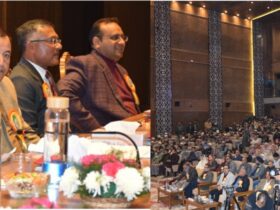

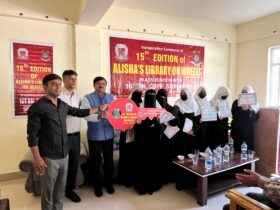
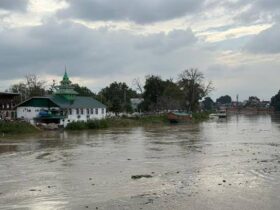
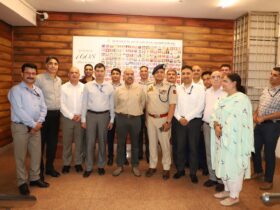


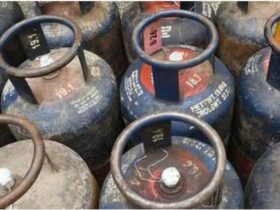

Leave a Reply